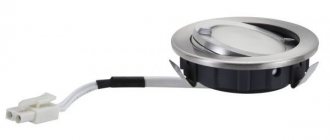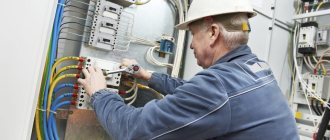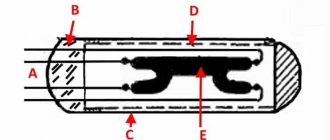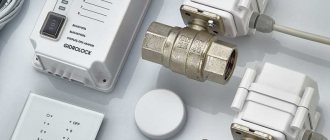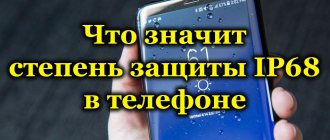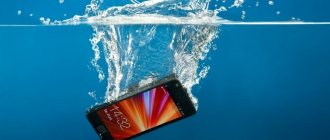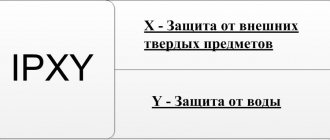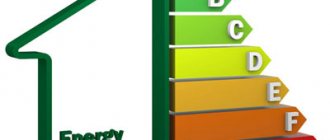A heavy rainfall can ruin your smartphone after just one short conversation. Another model retains functionality after prolonged immersion in water. In the second example, the manufacturer provided ipx7 protection, which is indicated in the accompanying documentation. This specific designation indicates the durability and safety of electrical devices when used in adverse conditions.
In order not to damage equipment due to careless handling, you need to clarify the level of protection
Classification of degrees of protection
Manufacturers may apply their own standards and testing programs to create products with improved or special technical characteristics. However, it will rarely be necessary to maintain functionality under excessive pressure at great depths or resistance to aggressive chemical compounds. For extreme conditions, specialized methods are used to prevent damage.
As a rule, it is enough to prevent mechanical contaminants and water from penetrating into the housing. The international standard IP (Ingress Protection) was created on these principles. The numbers given after the letter abbreviation confirm the product’s compliance with a certain level of protection.
For your information. Having determined the classification system, they clarify the permissibility of installing a switch, lamp or other device in the open air. The IPX4 protection class, for example, prevents drops from penetrating into the housing from any direction.
What does the first digit in the IPXX marking mean?
This position shows protection from dust, sand, larger mechanical contaminants and solid objects. The first number can be used to decipher safety for humans. With one, the maximum dimensions of the holes in the housing do not exceed 5 cm, which prevents accidental or intentional hand contact with live internal components. Further classification is made by decreasing the corresponding dimensions (mm):
- 2 – 12,5;
- 3 – 2,5;
- 4 – 1;
- 5 (6) – partial (complete) barrier to dust penetration.
Compliance with standards is confirmed by test results. To test the highest degrees of protection, talc powder (cement, coal) with a standardized concentration of contaminants in the working volume is used.
Decoding the second digit in the IPXX marking
This part of the code characterizes water resistance. Numbers from 1 to 6 indicate protection when exposed to drops or jets. The highest levels (7-9) correspond to a certain level of tightness.
In this case we are talking about a liquid, therefore, if a certain standard is met, it is implied that the penetration of foreign solid objects is impossible. For this reason, the third position of the code is sometimes replaced with the Latin letter “X”. If "ipx4" is indicated, it means that splash protection is provided from all directions. It is clear that in this design, the smallest particles of talc are unable to get inside the housing.
Additional letters
Using two special symbols, test conditions and other significant features are clarified. The first letter indicates the prevention of penetration into the protected area:
- hand – A;
- finger – B;
- tool (test probe diameter 3.5 mm) – C;
- wire (1 mm) – D.
The last letter must be deciphered as follows:
- H – the product is designed to work with high voltage;
- M (S) – moisture protection tests according to the ipx standard were performed in operating mode (with the mechanical functional units in a stationary position);
- W is an outdated designation used to indicate adaptability to bad weather conditions (specialized GOST standards are currently used).
IPX marking
The first characters, IP in translation - protection from external influences, in English it sounds like “International Protection”.
The standard was created by an international commission and is used to determine the level of protection. The numbers in the encryption indicate the degree of protection of the gadget from moisture and small solid particles entering the internal part of the electronics.
The letter “X” with the first number in front of it indicates the level of dust protection. Degrees can be from 0 to 6 levels. Where 0 does not protect the electronics from fine dirt, and 6 means a high level. If there is an “X” immediately after “IP”, then the device is exposed to dust. Most gadgets developed for the average user do not have degrees of protection against small particles. Levels five and six mean approximately the same thing, 5 means dirt can get inside but will not affect the operation of the electronics, 6 means complete protection.
The letter “Y” and the second number in the marking are responsible for the moisture resistance of the device. There are only 8 levels, where 0 means no protection, and 8 even allows you to dive with the gadget to a depth or immerse it in water for half an hour. Specialized devices also have level 9, but it is not found in standard electronics. Unlike dust resistance, moisture resistance is always noted, even if it is zero. That is, the highest level of protection will be marked IP68. Let's look at the levels of moisture resistance and water resistance in more detail.
IPX2
Headphones with this level of protection remain functional even with heavy sweating. That is, they are great for jogging, but they should not be protected from rain or immersion in water. It is not recommended to wash such devices; you can wipe them with a damp cloth. Mostly Samsung headphones, wired and wireless, are produced with this marking.
IPX4
They have a greater degree of protection and will maintain the functionality of the device in bad weather and splashes. You can't dive with these headphones, but you can run a marathon or use them under other high loads. IPX4 marking is the most popular among manufacturers of goods for athletes; it can withstand rain and direct contact with water droplets and the device continues to work.
IPX6
A high level of moisture resistance has just such a marking. The device will withstand splashes from different angles. But they are not suitable for swimming and diving. If you really want to, you can take a shower with these headphones, but not all the time. Speakers marked IPX6 can be safely taken to the pool and not worry about their safety. The devices are designed for contact with water, which means that even if water gets under the outer shell, functionality will not be lost.
IPX7/8
Suitable markings for people who constantly drop their gadgets into the sink, toilet, or simply forget to take them off before bathing. Such devices can withstand complete immersion in water for 30 minutes. Suitable for taking a shower or bath, if the time does not exceed half an hour, it can be immersed to a depth of up to a meter, with some manufacturers even more.
Top-end portable speakers are accompanied by such markings and are designed to survive in conditions of high humidity and even immersion in water. For those who like to read in the pool or bath, e-readers with a high level of protection from water have been created. Smartphones from Samsung and Apple are often marked IP68, which allows them to even be washed under the tap; before doing this, read the instructions for your phone.
Degrees of protection against moisture
Types of protection for sockets
For ordinary consumers, under normal operating conditions, preventing water from entering electronic devices is of greater importance. Below are detailed data on the ipx4 level, the degree of protection, and an explanation of other categories. The list highlights the features of test procedures that confirm resistance to certain types of external influences:
- 1 – fall of water drops (vertical);
- 2 – similar conditions with a body deviation of 15 degrees;
- 3 – increasing the impact angle to 60 degrees;
- 4 – a special device is used to check the resistance of the protective shell to splashes from all sides;
- 5 (6) – water jets are supplied from different directions (increased pressure);
- 7 (8) – tightness is maintained during short-term (long-term) immersion in water;
- 9 – provides protection functions when exposed to jets of hot water under high pressure.
Tests for compliance with standards are performed in a special chamber
IPX8 protection level has all degrees from 1 to 7?
No. Each degree is individual!
IPX marking at all levels has its own characteristics and the standard differs from each other. That is, a device that can withstand immersion can be damaged by a directed jet of water. Gadgets with complete protection from moisture are marked with two numbers, for example IPX5/7. If these are headphones, they can withstand rain, washing and complete immersion very well.
In any case, before experimenting, you need to read the gadget’s instructions. Even with a high degree of protection, there may be inconsistencies in operating rules. For example, a device marked IP67 can be immersed in water for half an hour. However, the instructions indicate that conditions of high humidity can lead to breakdown over time and this is not a warranty case for repairs. That is, the smartphone will survive if you drop it into a puddle, but it is not recommended to swim with it.
Phones with increased moisture protection
IP68 - concept and explanation of protection degree markings
From the above data it is clear that for ipx4 the degree of protection ensures no damage even in heavy rain. However, you cannot swim with such a smartphone, since water can penetrate inside the case even at ipx5 or ipx6.
The required level of tightness starts with ipx7. According to the current standard, tests are performed using the following conditions:
- complete immersion of the product to a depth of up to one meter (along the bottom edge);
- procedure duration – 30 minutes;
- the temperatures of the liquid (sample) differ by no more than 5°C.
It should be emphasized that there are no precise standards for ipx8 (9). Improved security is expected. However, these categories are tested using specially approved methods. Of course, the eighth level cannot be worse than the seventh. However, data on the maximum depth and duration of exposure are not established in the current standard.
Examples of modern smartphones with improved moisture protection ( IP 68):
- Samsung Galaxy A8 (A9);
- LG G7 ThinQ;
- CAT S30;
- Huawei P20 (Pro version).
Does the IPX8 mark mean it is completely waterproof?
The term means that the device will not lose functionality if water penetrates, but does not provide complete waterproofness. Few devices can boast of protection against moisture getting inside. As a rule, such gadgets are produced for certain categories of people: the military, athletes. The IPX8 marking will keep the device in working condition when exposed to water and even submerged to a depth, but if moisture comes into contact with the electronics for a long time, the gadget will fail.
If you need a diving device, then you need to look for the ISO 6425 marking. This standard says that each device has been tested and is completely waterproof. Withstands prolonged exposure to water, frequent use at depth and under pressure.
Ways to achieve increased moisture protection
Despite compliance with certain standards, attention should be paid to the manufacturers' instructions. Thus, the well-known manufacturer Apple creates new models of smartphones with IP 67 protection. However, the accompanying documentation states that there is no warranty if damage is caused by contact with water. Separately mentioned is the possibility of deterioration of tightness due to natural wear and tear.
iPhone 8 offers IP 67 protection
To prevent moisture from entering, special (enlarged and duplicated) sealing gaskets are installed. Some manufacturers equip their products with removable connector covers. Non-separable structures are created using sealed adhesive joints. A fashionable trend is the elimination of the standard 3.5 mm audio output. This solution encourages the purchase of wireless headphones while eliminating the path of water penetration.
What is the IP class of dust and moisture protection?
IP (Ingress Protection rating) is an international standard for protecting the body of any household appliance from the harmful effects of the environment. The degree of protection refers to the stability of the housing, verified through numerous tests in laboratory conditions.
The international protection mark consists of two capital letters IP and two numbers, where the first indicates the degree of protection against the penetration of solid objects into the housing, the second - against the penetration of moisture. The numbers may also be followed by letters, indicating the possibility of touching dangerous parts.
Example: average headphone protection class IP67. The number 6 indicates that dust may penetrate inside the case as the device is used, but this will not affect the quality of the headphones. Number 7 – the case is protected from moisture and the headphones can be submerged under water.
Do you need IPXX protection?
Improved tightness is needed not only when placing equipment in an open space or in a room with high humidity. Even a small amount of water provokes short circuits and activates corrosion processes. The formation of oxides disrupts the performance of contact groups.
The example of smartphones shows the risks that arise during normal use. If you accidentally drop an ordinary gadget into a full sink, you can ruin your expensive equipment. In some situations, restoring functionality in a specialized service center is not economically feasible. After purchasing a protected model, such troubles (significant costs) will be eliminated.
Protection class IPX7
These products can be placed under water for a short period of time.
When they are immersed, liquid may enter the electrical equipment, but this should not lead to disruption of its operation.
This marking is used for GPS navigators, echo sounders, electrical equipment used for tourism and mountaineering, etc. Gadgets that can be used for active sports are often labeled this way.
IPX7 rated electrical appliance
Immersion of electrical products for testing is carried out (according to IEC 529-89) in accordance with the following requirements:
- the lower part of the product must be located at a depth of at least 1 meter;
- the layer of water above the top of the product must be at least 15 centimeters thick;
- full immersion time – at least 30 minutes;
- The temperatures of the water and the product must be the same; a temperature difference of ± 5°C is allowed.
A discrepancy in temperature indicators may be larger, but only if the equipment being tested is energized or has parts that move during operation. This discrepancy value can be determined for a specific device in agreement with the customer and the manufacturer.
Most often, testing is carried out in the temperature range from +15 to 35°C. Therefore, using them in baths or saunas can damage the electrical device.
Attention! When using gadgets with this protection class, it is not recommended to press buttons under water. Also, when diving, all openings must be closed.
Thus, if you need to use electrical appliances in a humid environment, or if water may enter the device during operation, you need to purchase equipment rated IPX7 or IPX6.
